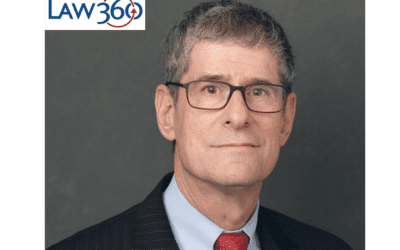Today’s column discusses Burroughs v. Bellsouth Telecommunications Inc., 2006 U.S. Dist. LEXIS 52815. (June 14). Burroughs is a tour de force expose of how the ERISA law has been interpreted by the courts in a manner that thoroughly betrays Congress’ intent to protect promised benefits.
U.S. District Judge William Acker Jr., a frequent critic of the ERISA law, held nothing back in his criticism of Bellsouth and its claims administrator, Broadspire Inc. Although a magistrate judge had recommended that benefits be denied, Acker overruled that recommendation and ordered benefits paid.
The court began its discussion with an examination of the standard of review applicable to the claim. Ridiculing the notion of the arbitrary and capricious standard of review, the court explained:
”In [Firestone Tire & Rubber Co. v.] Bruch, [489 U.S. 101 (1989)] the Supreme Court established the still controversial idea that an ERISA plan document can give discretion to an ERISA fiduciary both to interpret the plan and to rule on the merits of a particular claim, and thereby render the fiduciary’s decision invulnerable to judicial review except upon a finding by a court that the fiduciary abused his discretion.
Although, in theory, the plan document is thought of as a contract between the employer (the plan sponsor) and the employee, it never is truly the product of arms-length negotiation between the settlor and the cestui que trust. The employee has no say-so in fashioning the coverage or the claims procedure. Yet, the beneficiary is deemed to have granted to his ERISA trustee the right to be less than loyal to him. In actuality, the funding party, whether an insurance company or a self-insured employer, is always self-interested. That self-interest is absorbed by, or is adopted by, the agents and claims administrators of the sponsor. Their loyalty is to the party who pays them.
Nonetheless, the court explained precedent bound it. Therefore, following Brown v. Blue Cross & Blue Shield of Alabama Inc., 898 F.2d 1556 (11th U.S. Circuit Court of Appeals 1990), cert. denied, 498 U.S. 1040 (1991), the court explained that its job was to first examine the claim determination to see if it was tainted by self-interest. If so, the court must next decide what deference, if any, to give the decision. Inherent in those findings is that the court must examine the reasonableness both of the claim presented and of the benefit determination.
After poring through the claim record, the court could find ”no evidence by which BST [Bellsouth Telecommunications] can honestly argue that it has proven by a preponderance of the evidence that its denial decision was not tainted by self-interest.” Nor was such an argument even made, although the court acknowledged that Bellsouth claimed it honestly believed Burroughs was capable of working. Rejecting that defense, the court stated, ”If BST sincerely holds such a belief, it is guilty of self-delusion.” Turning back to Brown, the court explained that ruling ”was doing nothing but accommodating to reality. It was recognizing the obvious, namely, that in the real world of ERISA decision-making, the deciders are always affected by self-interest.”
Dispelling the notion that the court was biased against BST based on prior rulings, Acker characterized himself as ”an equal opportunity critic of ERISA decision-making.”
The court then turned to the issue of how to assess the degree of deference to be accorded. Finding not a single case in which a court fixed a numerical degree of deference, the court determined that BST’s ”conflict-of-interest was and is so glaring and so overwhelming that it pervaded and corrupted its decision. On a scale of 1 to 100, the degree of deference due BST’s decision is zero.” Indeed, the court expressed its belief that the proper approach under Brown should be:
”[W]hen an LTD beneficiary presents evidence from a treating physician upon which it would be just as reasonable to find the claimant disabled as it would be to find him not disabled, he would have met his prima facie burden under Brown, whereupon the burden would shift to the conflicted decision-maker to prove that his decision was not influenced in the slightest degree by his self-interest, something virtually impossible to do. Under such circumstances, if the decision-maker fails, he loses.”
Accordingly, because the insurer offered no proof that Burroughs’s claim was frivolous, the court had no basis for inferring the claim denial was free of the taint of conflict. Indeed, the court explained that the plaintiff presented substantial and credible medical evidence of a complete inability to work. Her claim hinged on professional medical opinion, even though disputed and even though involving competing diagnoses of serious physical and mental conditions. The professional opinions she offered were, in this court’s opinion, less likely to be tainted than those supplied by BST.
The court then suggested that if it was misreading Brown, the only alternative would be to examine all of the evidence de novo. Under that approach, Burroughs would also prevail. Although the court questioned the propriety of using Rule 56 to decide the case on summary judgment, it acknowledged the use of that procedure in most ERISA cases, and pointed out, ”To conduct full-scale trials of ERISA benefits claims would change the ERISA landscape forever, perhaps for the better.” Examining the evidence, the court found that Burroughs consistently presented strong evidentiary support for her claim only to be met with a myriad changing reasons for the denial. Summarizing, the court noted:
”BST’s in-house medical evidence was, of course, credible in the eyes of the one paying for it. The BST correspondence, external and internal, reveals inquisitorial skepticism of the ”cost containment” variety. All of the participants in the denial decision were so self-interested as to call into question, if not to annihilate, their expressions of opinion. Under ERISA, the ethics of the benefits decision-maker do not require recusal when the decision-maker is self interested, but Brown recognizes that a self-interested claims administrator runs the risk of automatic reversal if his self interest is detected by the reviewing court.
The court also criticized BST’s claims evaluators for misperceiving their role ”as defenders of BST” rather than ”fair and open-minded claims administrators.” Finally, although the court explained it was not bound by the Social Security finding awarding Burroughs benefits, the court also found no reason to disagree with that finding; and ruled that ”[o]nly BST’s self-interest can explain BST’s disagreement with it.”
Accordingly, the court reversed the denial and awarded benefits.
Acker has been a frequent and persistent critic of the ERISA law. In an article published in the Cumberland Law Review in 1999, he wrote:
”Occasionally, a statute comes along that is so poorly contemplated by the draftspersons that it cannot be saved by judicial interpretation, innovation, or manipulation. It becomes a litigant’s plaything and a judge’s nightmare. ERISA falls into this category. In Florence Nightingale Nursing Service, Inc. v. Blue Cross and Blue Shield [832 F. Supp. 1456 (N.D. Ala. 1993), aff’d, 41 F.2d 1476 (11th Cir. 1995)] I started my opinion with these three sentences:
‘A hyperbolic wag is reputed to have said that ERISA stands for ”Everything Ridiculous Imagined Since Adam.” This court does not take so dim a view of the Employee Retirement Income Security Act of 1974. Instead, this court is willing to believe that ERISA has lurking somewhere in it a redeeming feature. [832 F.Supp. at 1457].’
”Since writing Florence Nightingale, I have changed my mind. ERISA is beyond redemption. No matter how hard the courts have tried, and they have not tried hard enough, they have not been able to elucidate ERISA in ways that will accomplish the purposes Congress claimed to have in mind. For more than ten years, I have consistently and constantly criticized ERISA, and I feel no compunction in lifting passages from my prior opinions as I write this article. I cannot plagiarize myself.” Acker, ”Can the Courts Rescue ERISA,” 29 Cumb.L.Rev. 285, 285-86 (1999).
Although the language in the Burroughs decision is unusually harsh for a judicial opinion, the court’s frustration appears to have reached its breaking point. The ERISA law has, as Acker points out, resulted in absurd decisions that have no legitimate rationale. Acker clearly points his finger at what he believes to be the culprit: the Supreme Court’s ruling inFirestone v. Bruch, 489 U.S. 101 (1989), which gave insurers license to place language in their policies that would trigger a standard of review that makes ERISA decisions virtually unreviewable and allows claim administrators bent on refusing payment to act with virtual impunity.
While Acker may be one of the few remaining judicial critics of the ERISA law, after the recent death of Judge Edward Becker of the 3d Circuit who authored the opinion in theFirestone case that was overturned by the Supreme Court ruling, and who also excoriated the ERISA law in DeFelice v. Aetna U.S. Healthcare, 346 F.3d 442 (3d Cir. 2003), other voices have joined the chorus. Recently, a highly regarded ERISA scholar, Professor John Langbein of the Yale Law School, authored an article entitled ”Trust Law as Regulatory Law: The Unum/Provident Scandal and Judicial Review of Benefit Denials under ERISA” (available at www.ssrn.com, to be published in the Northwestern Law Review in 2007).
In his recent article, Langbein continues the criticism of theFirestone opinion that he first authored in ”The Supreme Court Flunks Trusts,” 1990 S.Ct.Rev. 207 and maintains that while Unum has been singled out for its conduct, the courts’ interpretation of the ERISA law has given all claim administrators license to engage in similar misconduct. In addition toFirestone, which he contends was wrongly decided, Langbein blames a misuse of trust law, an improper application of administrative law procedures to the litigation of ERISA disputes, and a succession of opinions authored by the 7th Circuit refusing to acknowledge the conflict under which plan administrators determine claims. While Acker’s view in the Burroughs case may be extreme, as the academic analysis performed by Langbein corroborates, the points he makes are thoughtful and, more importantly, irrefutable.
This article was initially published in the Chicago Daily Law Bulletin.






